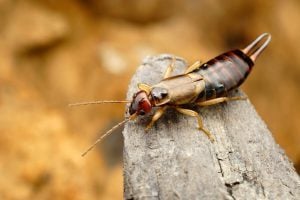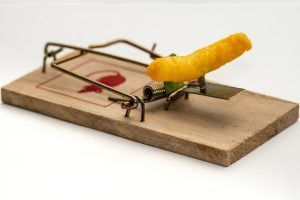Mold and mildew generally pop up in damp and warm places, such as crawl spaces, bathrooms, under a sink, or on fabrics. And yet, they differ in some ways. Mildew is white in color while mold can be black, green, blue, or red. Mildew has a powdery texture and mold tends to be slimy. Even if you do not see mold, keep in mind that its spores can remain dormant for a long time. When it gets warmer, mold starts to grow. Although mildew and mold cannot kill you, exposure to their spores can be toxic to humans and pets. This is particularly true for kids, the elderly, and people with allergies and weak immune systems. A runny nose is just one of the common symptoms. They destroy walls and ceilings and ruin fabrics, making even the cleanest house look dirty and ugly. So what can you do to get rid of this hazardous toxin?
What is the best mold killer and remover? Once you have detected mold in your house, you should remove it as soon as possible. So what are the effective ways to kill mold? You may apply powerful chemical products based on ammonia, bleach, or hydrogen peroxide. These are time-honored solutions that do not require rinsing. Alternatively, you may apply natural solutions containing vinegar, borax, and sodium carbonate. While they are not so potent, there are some advantages to using them. Vinegar penetrates the material well and, therefore, is highly effective when applied to porous surfaces. Borax is odorless and can act as a deodorizer. Besides, you may try an ozone generator that both kills and disinfects mold.
The Professional Disinfecting Mildew, Virus & Mold Killer is one of the most efficient options. Formulated with ammonia, it is very potent and works great on any surfaces. Whether you have mold issues on the floor, in the bathroom, or on the wall, this product will be an ideal choice! This is a professional and commercial-grade mold remover. In addition to killing mold, it eliminates bacteria and viruses. On top of that, the concentrate has a pleasant fresh lemon scent and neutralizes foul odors.
Best Mold Killer Products
In order to successfully remove mold, you should apply solutions based on ingredients that really work. These are ammonia, hydrogen peroxide, and bleach.
- Ammonia can be in the form of gas or colorless liquid with a strong odor. It is a compound of nitrogen and hydrogen that is widely used in pharmaceutical and cleaning products. Ammonia effectively kills mold, especially on flat surfaces, glass, and tiles. However, it is not recommended for porous materials like wood. One more downside is that in concentrated form, ammonia can pose some health hazards.
- Bleach consists of sodium hypochlorite and is a common household product. It kills mold on nonporous materials but is not effective when applied to wood or drywall. It does not penetrate underneath the treated surface and cannot eliminate mold completely. Even worse, mold can go deeper into the material. That is why bleach is not recommended for severe mold infestation.
- Hydrogen peroxide is a disinfectant that is commonly used to remove impurities from wastewater. In addition to its antifungal properties, this chemical compound can effectively fight off bacteria and viruses. Another advantage lies in the fact that, unlike bleach, hydrogen peroxide is eco-friendly and not toxic. As for mold, this chemical works great when applied to fabric, walls, and household appliances. However, it may fade the fabric color, therefore, we recommend that you first apply the product to a small area of the fabric to test it’s color-fastness.
So what are the most reliable products containing these ingredients?
Best mold killer spray for bathroom
The RMR-141 RTU Mold Killer eliminates almost all household bacteria and viruses as well as removes mold. Based on an ammonium chloride formula, it is a strong solution providing an immediate result. Unlike pure ammonia, this formula works on both porous and non-porous surfaces. It also deodorizes treated spaces and can be applied in homes, hospitals, and other spaces. The product is EPA-registered and safe to use. It comes in a 32-ounce bottle as a ready-to-use spray.
{code 1203}
Best mold killer for walls
Another effective product formulated with ammonia is the Professional Disinfecting Mildew, Virus & Mold Killer. This is a commercial-grade solution frequently opted by professionals. It is effective when applied to most common mold-infested places, including floors, bathrooms, and walls. Dilute the product with water at a ratio of 64 to 1 and spray generously on the infected area. It has a nice scent of fresh lemon, neutralizing repulsive odors.
{code 1202}
Best mold killer with bleach
The Skylarlife Home Mold & Mildew Remover is an excellent bleach gel. Based on sodium hypochlorite and sodium hydroxide, the product is made with a powerful formula. It does not require scrubbing, all you need to do is apply the solution and wait for about 7 hours. The cleaner quickly erases stains of mold and has a long-term effect. Since the product comes in the form of a gel, it is much safer in use compared to liquid formulas. It is often used to kill mold in the shower and is applied to the sink, tiles, and bath.
{code 1204}
Best mold killer spray for carpets
The Concentrated Hydrogen Peroxide (H2O2) Spot & Stain Remover is recommended for treating upholstery, carpets, and areas around pets. It eliminates all sorts of stains and unpleasant odors. You can safely apply it even to the most delicate laundry items — it will not damage fabrics because it is biodegradable. Also, the product successfully eliminates mold on household appliances and granite countertops. This concentrated formula is very cost-efficient as 2 ounces of the liquid make 1 quart of the ready-to-use solution.
{code 1205}
Natural Mold Killers
When dealing with a small amount of mold in the house, you can do it without chemical sprays and concentrates. What natural mold killers are available?
Mold Killer with Vinegar
Vinegar is a good non-toxic mold remover that can be safely used around children and pets. It kills most household mold species and works great on porous surfaces. Unlike bleach, vinegar penetrates the treated material and is considered to be highly efficient. However, it has some drawbacks. First, the smell is really offensive and is not easy to neutralize after treatment. Secondly, you will have to exert yourself. To achieve the effect, rub vinegar into the infected material and then wait until it dries. Pretty time-consuming and labor-intensive.
Best natural mold killer for porous surfaces
Many manufacturers offer 20% or 30% vinegar concentrates. When it comes to mold removal, we recommend using a more concentrated mold killer with vinegar. For example, the 75% Pure Vinegar – Concentrated Industrial Grade is 15 times more concentrated than regular vinegar. To treat light mildew or mold, mix it with water at the ratio of 1:14. For heavy mildew, the ratio can be up to 1:1. The product is made in the U.S. by Belle Chemical, a family-run company headquartered in Montana. It manufactures vinegar, isopropyl alcohol, activated charcoal as well as vitamins.
{code 1206}
Mold Killer with Borax
Borax or sodium tetraborate is a popular cleaner and deodorizer that is used for many purposes, including pest control and mold removal. It comes in powder form and is of low toxicity. It kills mold by changing pH levels, creating an unfavorable environment for further mold development.
You can make your mold killer spray or paste with this Borax Powder. For a spray, mix one cup of borax with a gallon of hot water. Shake the mixture and pour it into the spray bottle. Another solution, borax paste, it is a good mold killer for wood surfaces. Take half a cup of borax and add the powder to 0.5 gallons of boiling water. Stir the solution thoroughly and make sure that the powder is fully dissolved in the water. Apply the paste with a brush and allow it to dry.
Best mold killer for wood
The MILLIARD Borax Powder – Pure Multi-Purpose Cleaner is a good choice as it comes without additives, fragrances, and dyes. Made with pure sodium borate, the product can remove persistent mold. Buyers say that it is especially effective against shower mold. The Milliard Borax Powder also helps to cope with rust and can also be used as a deodorizer.
{code 1207}
Mold Killer and Remover with Sodium Carbonate
Sodium carbonate or washing soda is a natural cleaner and mild mold remover. It is also used to soften water and a as food additive. Sodium carbonate will not guarantee the complete removal of mold and should not be used to deal with serious mold problems. This compound is good at cleaning clothes. It binds to the minerals that harden the water, allowing the detergent to penetrate deeper into fibers.
Best mold killer for wood and fabric
The Concrobium Mold Control Household Cleaner is a popular solution based on sodium carbonate. It can be applied to wood, drywall, concrete, plastic, tile, and fabric. Spray the solution on the infected area of any surface and allow it to dry. Free from hazardous fumes and chemicals, it does not require rinsing to get rid of mold. It goes deep into the material, destroying not only surface mold but also its spores. The product is convenient to use in hard-to-reach areas. It covers about 1,500 square feet and can be used with a fogger for whole-room treatment.
{code 1208}
Ozone Generator
Ozone treatment is one of the ways to kill mold in the house. For this purpose, use an ozone generator that produces gas in large amounts. Once this gas comes in contact with microorganisms like mold, it alters their chemistry. This is supposed to make mold non-toxic and, therefore, safe for those living in the house.
That said, there are some problems with ozone treatment. First, it has a limited effect. Ozone does not have the ability to penetrate surfaces like walls, so it works only against mold spores. Therefore, it will not eliminate mold grown deep into surfaces or materials. Secondly, what the machine does is deactivate the spores. It does not physically remove dead mold, nor does it prevent mold from regrowing.
And finally, an ozone generator can be used for only a short period of time — up to 7 hours. Neither people nor animals or plants should remain in the room during its operation because the machine can pose health hazards and damage vegetation. In particular, it may cause difficulty breathing and coughing.
Nevertheless, ozone generators are worth trying for several reasons:
- Ozone treatment is not labor-intensive.
- It stops mold growth for some time until you have the ability to clean it out.
- Ozone generators are effective at killing pathogens and bacteria. They can be used for the disinfection of mold before you disturb it. Keep in mind that mold spores that have been disturbed during cleanup can travel in the air and be breathed in.
- No toxic detergents, chemical sprays, or bleach are needed.
- It is a cost-efficient solution for treating large spaces.
Best mold killer for crawl spaces
If you think this option is for you, try the Enerzen Ozone Generator. This generator has a unique pulsating technology, which eliminates odors and has longer lasting effects. Enerzen ozone generator is designed to eliminate both odor and mold as well as kill bacteria and viruses in the air. With a weight of just 5 pounds, it is easily installed and does not require maintenance. You may place it close to the washing machine, water heater, or other devices contributing to humidity in the house.
- WARNING: All ozone generators are meant to be operated in unoccupied spaces only. Remove any people, pets, or plants.
- The space may be re-occupied after 30 minutes of “airing out”.
{code 1209}
Rules for Killing Mold: Science-Based Effectiveness
Sometimes mold is very hard or even impossible to remove. According to EPA, when mold fills in the crevices in porous materials, it is virtually impossible to remove it. In this case, all that is left to do is to throw them away. Scientists from the University of Minnesota Extension suggest first cleaning affected surfaces with soap and hot water and then applying a solution based on bleach.
They recommend mixing half a cup of bleach with five cups of water to treat a small area. For larger areas, use a mixture of half a gallon of bleach with five gallons of water. Never use ammonia and bleach together because this combination of ingredients produces highly toxic fumes. Make sure you ventilate the room after applying bleach to avoid lung irritation.
Researchers from the University of Illinois Extension advise using ammonia to clean mold from upholstery. Before application, brush off some mold from the item. Try to do it outdoors to avoid contaminating the air with mold spores. After that, vacuum the upholstery and clean the vacuum bag outside the house. Then, applying a ready-to-use ammonia solution or make your own one by mixing one cup of ammonia with the same amount of water. Rub the material with a cloth. Repeat it three or four times until the stains disappear. Remove ammonia using cold water and dry the treated area with a fan.
Expert Opinion: How to kill mold on wood after a flood | Jack Caravanos, Clinical Professor of Environmental Public Health Sciences

Jack Caravanos, Clinical Professor of Environmental Public Health Sciences
Jack Caravanos is Clinical Professor of Environmental Public Health Sciences at CGPH and Director of Research at Pure Earth. His areas of interest include dealing with pollution problems, lead poisoning, and global health. He has numerous scientific publications and awards.
In this video, Dr. Caravanos shares his opinion on how dehumidifiers can help to prevent mold issues after flooding. Based on his advice, we have selected a dehumidifier that removes up to 70 pints of water per day. By eliminating excess moisture, it prevents mold and mildew in the house.
“I want to give you some advice on controlling mold after a flood. First off, you need to set the dehumidifier on the driest setting. The lowest setting possible. Do not set it too high, otherwise, you won’t dry out the air. You have to drain these things. Many people connect them to hoses, which drain continuously. You will be surprised how quickly they fill up. If the unit is not working, it is not humidifying. So you got to make sure to drain it. Make sure the exhaust is pointed to the wettest part of the home. I recommend getting the largest one you can, at least 65 pints. Small ones that are 20 pints just don’t have enough power to do the job and they fill up very quickly… Do not use fans. The problem here is that you may actually exacerbate the mold spread and cause mold spores to migrate throughout the house. ”













